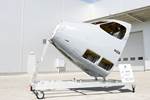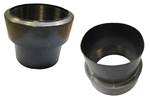Clean Sky 2 SHERLOC project advances SHM for composites
New video shows goals, framework, sensors and tests for more affordable, smart composite fuselage

Structural HEalth monitoring, manufacturing and Repair for Life management Of Composite fuselage (SHERLOC) is part of the Clean Sky 2 Airframe innovative technology demonstrator (ITD), the High Versatility Cost Efficient (HVCE) technology stream, and the work package B-4.3 More affordable composite fuselage.
SHERLOC is said to present the most comprehensive assessment of existing structural health monitoring (SHM) technologies and methodologies to date for a composite airframe in the operational and environmental conditions of a regional fleet.
A specifically developed building block approach utilizing certification guidelines has been developed to assess the SHM system as a whole covering integrity, durability and longevity of every piece of equipment and installation as well as diagnostic and prognostic methodologies.
Innovations include lightweight diagnostic film with sensors/actuators using inkjet printing and multi-functional sensors for monitoring composite curing processes as well as bonding degradation. These have substantially reduced the additional weight burden of SHM, and also enhance the industrialization process. The SHM platform is furnished with procedures for uncertainty quantification (UQ) as well as cost model analysis.
Learn more at
Related Content
-
Schrödinger advances materials informatics for faster development of next-gen composites
Cutting time to market by multiple orders of magnitude, machine learning and physics-based approaches are combined to open new possibilities for innovations in biomaterials, fire-resistant composites, space applications, hydrogen tanks and more.
-
Carbon fiber/flax landing gear achieves 54% weight reduction via tailored layup optimization
Fuko’s Biogear showcases how strategic composite material distribution and natural fiber damping properties can lightweight and enhance critical aerospace structure performance.
-
Automated robotic NDT enhances capabilities for composites
Kineco Kaman Composites India uses a bespoke Fill Accubot ultrasonic testing system to boost inspection efficiency and productivity.






